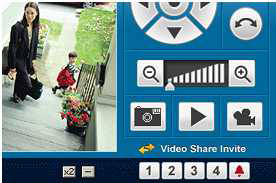by Gabe Goldberg
Though “crime-ridden cities” is a cliche, the sad fact is that no area is 100 percent safe. And besides crime, fire, water, and power outages can strike anywhere, causing immense damage and expense. So no matter where you live, it’s worth thinking about home security. And on a more positive note, some insurance companies give discounts for using alarm systems.
Security is best created via a layered approach — remember the Home Alone movies where the young hero worked hard to keep the bad guys out of his house but also created hazards for them inside. For example, remember that cell phones won’t give emergency responders as precise a location as they get from land-line calls, and Internet phones may not work when power is off.
Security can be improved in several inexpensive ways without gadgets. The cheapest thing to do is buy spiffy (but bogus) security company signs. They don’t really protect your home but they may make it less appealing than your neighbor’s — which may be all you need.
And you can organize Neighborhood Watch to increase awareness of how police operate and learn simple/easy procedures for improving security.
Technology, of course, has become more capable and diverse, and pleasantly less expensive. Many gadgets are easily self-installed; some eliminate the need for a dedicated — or any — telephone line. Most are modular, allowing tailoring monitoring to conditions/events of interest: door or window opened, motion detected, water where it doesn’t belong, fire, power off, etc.
A simple but flexible device which requires no monthly fee is the Sensaphone. It connects to a telephone line and power outlet, and accepts various sensor connections to detect unwanted events. When one happens, it dials phone numbers you’ve programmed and plays alert messages in your recorded voice. At a company where I worked, an earlier Sensaphone version several times prevented major computer damage from failed air conditioning.
An interesting alternative from Alarm.com provides comprehensive monitoring, alerting, and control without a phone or Interet connection, by using a built-in cellular phone.
The simplest sort of alarm system comes from LaserShield, offering plug-and-play motion detection. A master unit plugs into a phone line and optional slave units communicate with it wirelessly, watching multiple zones.
An economical but comprehensive monitoring solution is the AT&T Remote Monitor. This modular system connects to an Internet broadband router and supports diverse accessories such as cameras, water and motion detectors, door/window accessories, etc. A $10 per month fee provides remote monitoring and control. For example, cameras can alert and record video when motion is detected; recorder video is available for immediate viewing online.
Seniors or anyone concerned about being able to send for help can use a wearable lanyard that communicates with a base station.
When installing any system that alerts emergency responders, check local regulations. Some areas require registering such alarm systems and some impose fines for triggering false alarms.
Most important is actually using a system that’s installed. Surprisingly, research shows that many people don’t bother.
Finally, tell your neighbors what to do if an alarm sounds. There’s nothing more frustrating than an alarm sounding with no way to know what’s wrong, who to call, or how to silence the alarm.
Gabe Goldberg (tiplet@gabegold.com), a lifelong computer pro and technology communicator, has written three books and hundreds of articles for audiences including techies, baby boomers and senior citizens. He enjoys sharing tips and pointers that help people use and have fun with technology.

